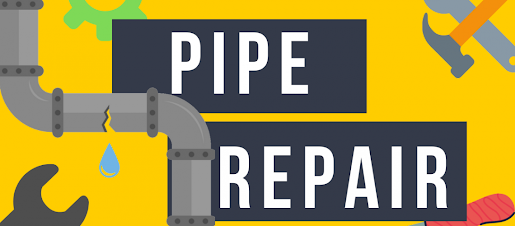Pipe Repair Overview
Leaks in your plumbing system vary, which means that each type of plumbing leak has a unique solution. Some types can cause flooding in your home, while others only cause minor damage. The method you use to repair them is determined by the type of leak. Here are some suggestions for preventing future pipe leaks.
Related Articles
1. Use of patch kits
There are always leaks in the plumbing joints, and the best way to fix them is to tighten the joint. If the leak is coming from a joint, you can either tighten the joint or apply an adhesive patch to prevent future leaks. If the leak is coming from a pipe, the only solution is to replace it. You don't always need to call a plumber. Consider using the pipe patch for a do-it-yourself fix.
Patch kits for plumbing leaks are available in hardware stores, or you can make your own by combining a piece of heavy rubber from an old inner tube with a C-clamp. If you have an old hose clamp lying around the house, you can use it in conjunction with a rubber patch. There are also factory-made kits with rubber pads that should be placed over the holes on the metal pipes and plates to keep the rubber in place by compressing it. Patch kits can be used as a long-term solution to leaks if the pipe is in good condition.
2. Use waterproof tape
Waterproof tape is another effective method for repairing leaks in pipes and joints. Wrap this tape around the area where there is a leak. In the area where the hole is discovered, a special stick compound is applied. Waterproof tapes can also be found in the form of epoxy paste or a self-tapping plug.
When using waterproof tape, make certain that the pipes are completely dry. Begin by placing the tape about 2-3 inches away from the hole and extending it about the same distance to ensure that the leak does not reoccur.
Compound sticks are used to seal small leaks by rubbing the stick against the hole. Even if the water supply is not turned off, leaks will not occur as long as the holes are sealed with the compound stick.
When using an epoxy paste, however, always turn off the water and keep the pipes completely dry so that the epoxy paste's adhesive effect is effective.
3. Tighten the fitting
Compression joints are commonly found on shutoff valves, but they can also be found in other fittings. Tightening it with two wrenches on the pipe or tube that leads directly to the fitting. Leaks will undoubtedly occur if there are misalignments.
4. Use flexible supply tubes
Instead of using copper or chrome supply lines, use braided, flexible supply lines. Rubber gaskets are used to seal the connections on flexible supply lines, and they usually only require hand tightening plus half a turn with a wrench.
Contact The Pipe Doctor
If you’re looking for a sewer and drain company in Seattle, WA, consider calling our team of professional plumbers at The Pipe Doctor. We have the equipment, skill set, and experience necessary to resolve all pipe-related issues.
We offer the following services:
- Sewer repair service
- Sewer replacement service
- Sewer cleaning service
- Sewer inspection service
- Drain cleaning service
- Hydro jetting service
- Water heater service
- Sump pump installation


Comments
Post a Comment